Name Laura Letinsky | Role Photographer | |
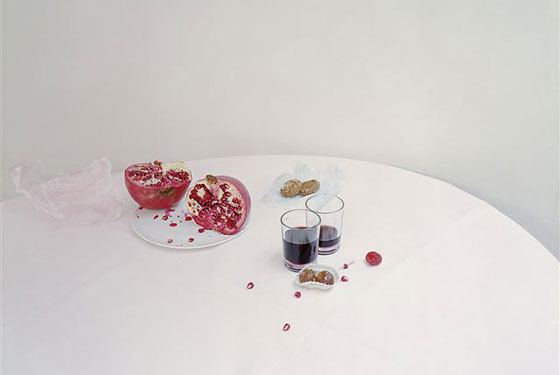 | ||
Books Laura Letinsky, Space/sight/self Education Yale School of Art (1991), University of Manitoba (1986) Awards Guggenheim Fellowship for Creative Arts, US & Canada | ||
Laura letinsky inspiration
Laura L. Letinsky (born 1962) is a Canadian contemporary photographer, born in Winnipeg, best known for her still lifes.
Contents
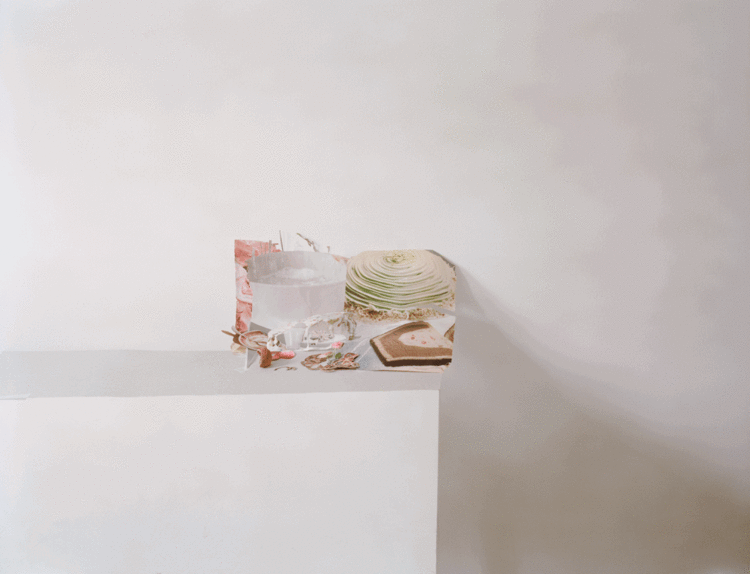
Letinsky holds a BFA from the University of Manitoba (class of 1986), and an MFA from Yale University, 1991. Letinsky received fellowships from the John Simon Guggenheim Foundation, Anonymous Was a Woman, and The Canada Council for the Arts. She is currently a Professor of Visual Arts at the University of Chicago.
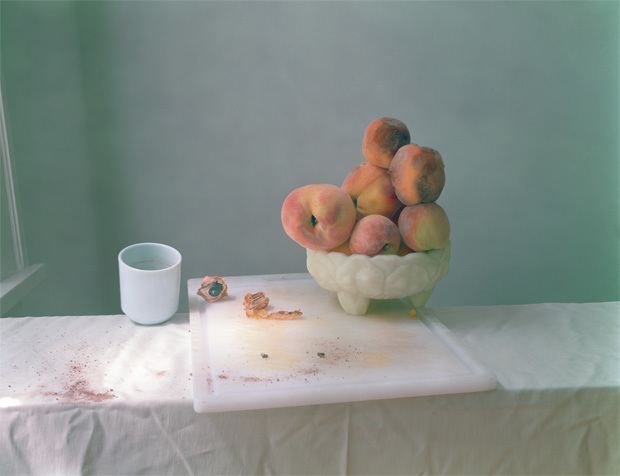
From her early photography of people she shifted to the still life photography for which she is now known. Her 1990's series, Venus Inferred, of couples were informed by representations, visual and other media, about love and how photography is used to convey our ideas about romantic relationships. Her photographs chip away at normative expectations as depicted in mainstream culture. From this supposed omnipotent third person point of view, her still life work availed a point of view that feels first person. Impetus for her investigation of the still life was its associations with femininity, the minor arts, and its imbrication within the home as the space of intimacy. Letinsky says that still lifes provides her with the potential to explore the false dichotomy between the personal and the political. Vital to this is the selection/orchestration of objects depicted in her images as well as her photograph's presence as object. Hence scale and surface is important to understanding these photographs. Rather than their being seen on a digital screen, she is invested in the experience of viewing her actual prints. She says that her work “is in part about the relationship between looking at something and other bodily experiences.”
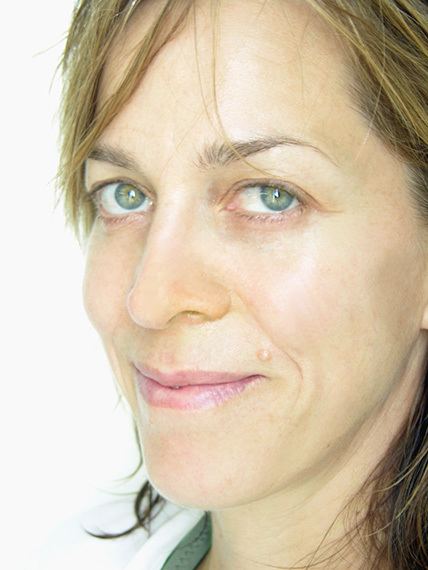
Letinsky's still lives are described as "Elegant, subdued and gently but relentlessly off-putting, her large-format photographs have an arresting presence that seems out of step with time. At the same time, though, art history suffuses her meticulously constructed scenes as fully as the softened daylight does the sparse interiors she photographs." Letinsky's still lives are reminiscent of Dutch still lives, they bring together "freshness, ripeness and decay." Although they nod to Dutch still lives, they are more modernized, using "Crumbled Coke cups, styrofoam to-go cartons" instead of the upper-class, lush food of the Dutch still lives.
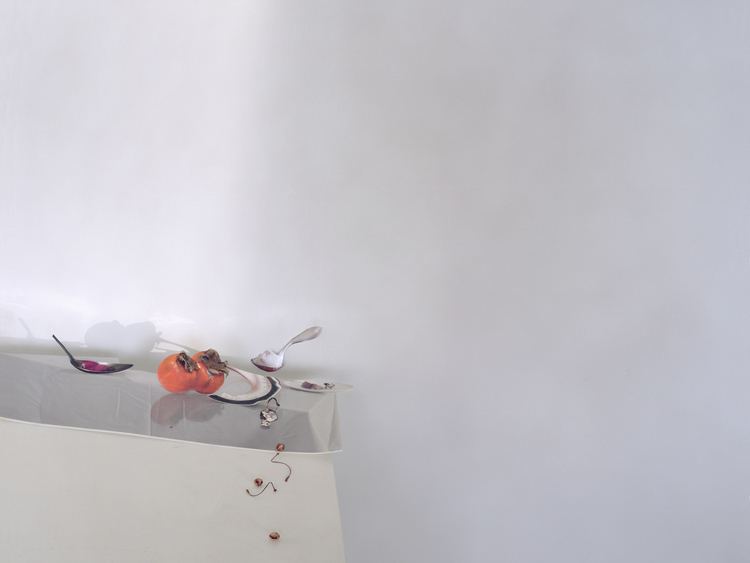
Letinsky's still life work alludes to human presence without including any actual figures. For example, in the Morning and Melancholia (c. 1997–2001), and the I Did Not Remember I Had Forgotten (c. 2002–2004) series, Letinsky seems to document the aftermath of a sumptuous gathering or dinner party. The title of the series itself is a reference to an essay by Freud, "Mourning and Melancholia," which discusses the human response to loss. The title I Did Not Remember I Had Forgotten also has a literary source; it refers to a line by St. Augustine, commenting on memory. This experience, related to deja vu, when one is reminded of something they had forgotten is a sense she wishes to impart through her photographs. , " Actually, I felt I had just come to this moment where I did not remember that I had forgotten, and it had to do with music. I'd gone for three years without listening to music. I would drive in the car and I would want silence, or I would listen to talk shows. Then for some reason I began listening to the radio, and some of the CDs I had around, and it was almost like drinking water after being really thirsty. I took such pleasure in it. Somehow, I did not remember that I'd forgotten to turn on the music.
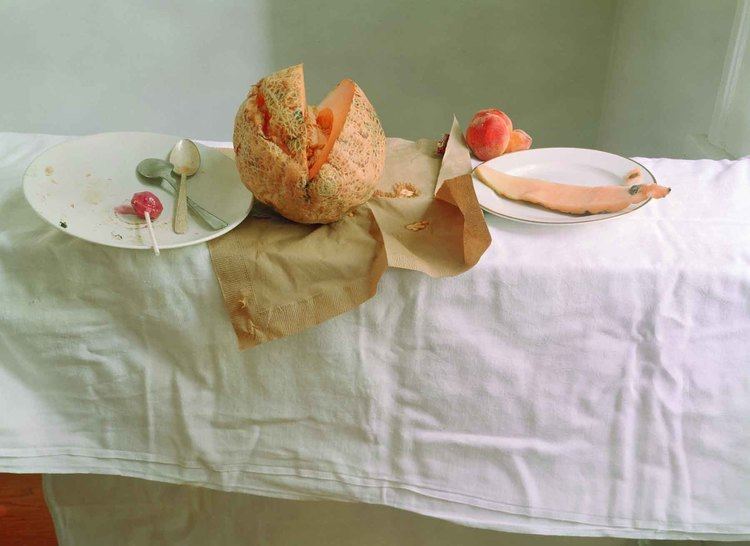
The Somewhere, Somewhere series (c. 2005) explores similar themes of recently vacated domestic settings. Here, questions about what a home is without anyone's possessions formed the basis of her photographic investigation. Initially printed large, she's revised their presentation to more of a serialized set of images that illuminate the differences and similarities within the mostly "rhetoric of beige" that makes the home.
Letinsky’s large scale work becomes purposeful and melancholy, not about the food itself but more of the photography. “Peaches aren't metaphors for anything; they are simply peaches, peach-shaped, peach-colored.” Her work is all about the line, shapes, and light interacting and how the view is experiencing the work. These fabricated scenes remind viewers of the ability to be real or fake within a photograph. Just as the 17th century northern European painters were not simply painting lemons and goblets, Letinsky's work speaks to the value of objects, but more, the valuing of their representation with photography conveying much about what and how to see and look.
A recent exhibition of her work includes the following artist statement:
"Still life is unavoidably an engagement with and commentary upon society’s material-mindedness. Laura Letinsky’s photographs of forgotten details such as wrapping paper, plastic containers, Styrofoam cups, cans, leftover food bits, and found trinkets remark upon these remnants of daily subsistence and pleasure. Of major influence are Dutch-Flemish and Italian still-life paintings whose exacting beauty documented shifting social attitudes resulting from exploration, colonization, economics, and ideas about seeing as a kind of truth. But instead of the traditional allure of a meal awaiting an unseen viewer’s consumption, Letinsky photographs the remains of the table so as to investigate the precarious relationships between ripeness and decay, delicacy and awkwardness, control and haphazardness, waste and plenitude, pleasure and sustenance. What is looked at is "after the fact," what (ma)lingers, what persists, and by inference, what is gone. The photographs in After All veer into darkness; literally, as regards the time of day the photograph is made, as well as emotionally and psychologically. Little bits and pieces hover in white grounds blown flat by blinding light, later lurking in deep inky grayed out pools. Light, through its abundance and its absence, can record and reveal as well as obscure and exaggerate. Formally, through degrees of control and chaos, the domestic scenes Letinsky photographs are redolent with the allures of domesticity (safety, comfort, familiarity) as well as its dangers (boredom, satiation, lack of desire). These liminal images are not intended as accurate visual description, rather aspiring to describe another kind of sensing. What one sees is not always visible and Letinsky explores photography’s transformative quality, changing what is typically overlooked into something splendid in its resilience."
Letinsky’s Still Life Photograph exhibit at the Indiana University in Bloomington featured over fifteen of her artist’s large-scale photographs. She created beautiful images that allude to the meals enjoyed. Earlier photographs explore photography's relation to mourning and melancholia whereas her later works shake off this perfume of absence to instead engage integral and subtle ideas as regard perception, value, and attention. Inviting soft light, delicate color, and enticing imagery co-mingle as photographic illusion. Her work from 2010-2012 leaves behind traditional space instead utilzing the photographic space as a kind of theater in which other's images/photographs are taped, pinned, and glued together so as to create an ambivalent and fraught scene. .
Letinsky is the author of several books, including:
Recent solo exhibitions include:
